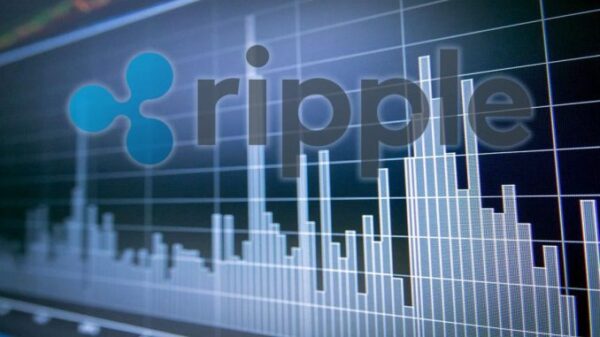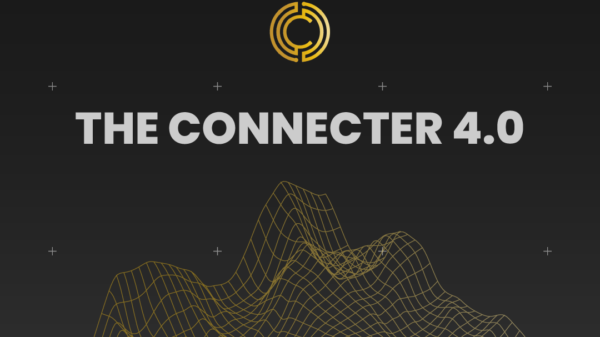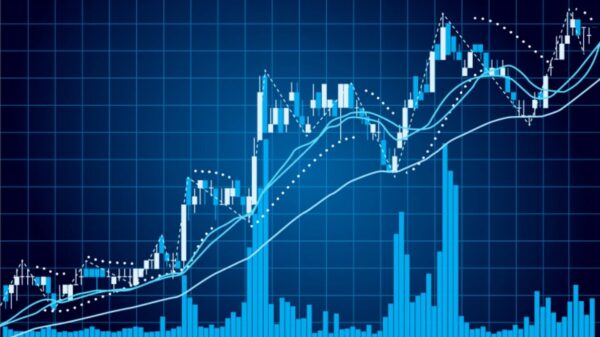Financial markets are subject to change now & then. Therefore, for trading in a financial market, one needs a proper understanding of the blend of analysis and effective trading tools implementation like market profile. So, let’s find out, what does market profile mean?
A market profile is such a trading tool that one uses to observe the 2-way auction process that drives all movement; price over a particular time frame. To put it simpler, a market profile is a graphical representation of volume distribution at each price level that one uses to gauge the financial market stage at any given point of time; balance (flat) or distribution (trend).
The concept of Market Profile was first propounded by Peter Steidlmayer, who introduced it to the CBOT traders or the Chicago Board Of Trade in 1985. Before this concept came into the mainstream, the technical analysis tool had only the volume per time unit instead of both the time frame and price unit.
How Does the Marker Profile Tool Work?
There always lies a tug of war between the buyers and sellers regarding how low the buyers can buy and how high the sellers can sell. Buyers want to buy a low volume of stocks, and sellers want to sell a high volume of stocks, causing the price to move up and down continuously. At a particular point of time, this fluctuation between high & low volume of stocks and the fluctuation in price stops, and a fair price is obtained that satisfies both the buyers and the sellers.
According to some scientists, when the financial market reaches this fair price or ‘balance price,’ the graphical display of the Volume Profile forms a bell shape. From this point, the stages are formed that go one after another, and the trend price movements of various strengths and duration start from this ‘balance price’ area. Scientists from all fields and sectors are now using this time-tested “bell curve” to analyze the market information.
The Profile chart compares the price (the variable) to time (the constant) by taking the price on the vertical axis and time on the horizontal axis. This chart helps to create a proper price distribution over time of any trading day. Therefore, whether a trader is trading ETFs, futures, or stocks, this time-sensitive and ever-evolving database would provide real‐time insight into the forces that shape the fluctuating activity.
Market Profile charting techniques are using the data from each day’s trading session and organize it in such a way so that one can easily understand who controls the market at that particular day and what is the “fair value” for that day. Each day the market develops a specific range for the day along with a value area; the value area is the point of equilibrium between buyers and sellers. Then, there are other ingredients in the Profile, along with the “fair value” that uses the Volume.
If the price moves away from the point of equilibrium in the Value area, the Volume begins to dip, which is indicative of the fact that the prices will again move back into market value. On the contrary, if the price moves away from the point of equilibrium on a strong volume, it indicates that the traders are re-evaluating the current market value area because now they are thinking differently and using different strategies; their trade sentiments have undergone a massive change.
How Is “fair Value” in a Forex Market Calculated by Market Profile?
A Market Profile chart is made up of TPO’s or the Time-Price Opportunities representing each trading session of a particular day. TPOs use different letters for each period of every trading session that may range from 30 min to 2 hours or more. The point at which the maximum TPOs occur is termed as the “Point of Control” or the POC. To calculate a value area, traders are using an average of 70% of the TPOs to represent whether the value area is high or low. The same value area is used as a reference in the trading session of the following day.
The TPO For a Particular Day Is Calculated in the Following Manner:
At first, the total number of TPOs in a single day’s trading session is calculated, and then 70% of this number is considered.
In the next step, the POC or the Point of Control is identified; the longest line the TPO that is nearest to the center of the Profile is the Point of Control.
Now, the TPOs of the two prices are added that lie above and below the Point of Control.
Now starting with the larger number of the two combined TPOs identified in the above step, both the larger and the smaller number are added to the Point of Control number, and the process is continued until it reaches 70% of the total PCOs of the trading session in a particular day.
This way, the range of hours that would yield the “fair value” is calculated; in a Profile chart, the first hour’s range is termed as the “initial balance” or the IB.
A wide initial balance is indicative of the fact that the prices will stay within that throughout the day. When the price goes above or below this initial range, it is termed as “range extension” that shoots high on trend days. However, sometimes the price stays constant at a given price level for a single TPO point, and this point is termed as a single point buying or selling tail.
A wide IB with a relatively balanced market represents a normal day.
When there are less than 5 TPOs in a row that make the price move constantly in 1 single direction, it indicates a Trend Day.
When a typical trading day starts as a trend day and then forms an equilibrium area, it is termed as a Double-Distribution Day.
A trading day with a comparatively narrow trading range but with a wide profile with a little or no range extension is termed as a Non-Trend Day.
A day with a symmetrical profile much closer to the Point of Control is termed as a “Neutral Day.
How is a Market Profile Indicator Used in Forex?
Forex or foreign exchange is the most liquid of all financial markets. Therefore, it demands a robust tool to analyze it; Profile indicator can be used as a powerful tool to analyze the forex trading market; how it is explained below; have a look.
Help traders to understand both the short term and the long-term value in the forex market.
When a trader intends to buy or sell any financial instrument from a forex market, he must understand where the value lies as compared to the current market price. This is where the Market Profile indicator helps Forex traders to identify both the short-term and long-term value in the market. It is the only charting technique discovered so far that can identify value in the marketplace for any particular currency pair.
Helps in Distinguish Between Trending and Non-Trending Markets
Forex traders use this market profile to identify the trending and the non-trending forex market. There is always a state of balance and imbalance of currency pairs lying in the Forex spot market. Using the Profile trading technique, one can easily monitor the balance points for the currency by transitioning between the balance and imbalance points in the forex market as and when they occur. The structure of the Profile trading tool helps in unveiling the existence of a directional market trend or a sideways market. And hence, traders are using this technique to capture directional moves very early.
The difference between a trending and non-trending market is that in a trending market, the structure of the Market profile trading tool is long and narrow, while in a non-trending or balanced market, the Profile is wider and more developed in structure.
It reveals more information about the market than conventional charts
The Market Profile trading tool offers a unique charting approach that is different from bar or candlestick charts, which were used previously to graph activity. The unique structure of the Profile charting tool displays the character of the market, like, for example, where and at what price level and for how long did the majority of the business took place. All these provide significantly more information to a trader about the ongoing activities taking place in a forex market at a given point of time.
The Profile represents the actual buy and sells orders transacted in the forex market, which allows one to interpret inventory conditions, emotional trading, and other vital cues that are otherwise not visible in any other conventional charting tool.
It helps to identify trade opportunities which are not otherwise apparent through any other charts
The Profile charting technique provides a unique visual representation of the forex market that can help one to identify trading opportunities that are not otherwise apparent on any other charting tool. For example, as one learns to study this Profile chart, he can easily spot a buying or a selling tail with the use of this technique, profitable auction points, fair price, or even the actual points of control.
Moreover, traders will also be in a position to gauge the perfect time when prices rise above a certain value area high or drop below a certain value area. These developments have the potential to create rewarding market opportunities that are not otherwise evident in any other chart types.
Wrap Up
Hence, one can use one of the powerful analytical tools called Profile technical charts for any market, whether they are manually traded or electronically traded. A Profile Concept can, therefore, also be applied to Forex, Futures, Stocks, Commodities, or Bonds. Even the Profile concepts can also be applied for position trading, day trading, or swing trading procedures.
The Profile is thus much more than a mere collection of individual data points. It is a graphical representation of important market information that conveys the complex and composite side of the forex market as a whole. If a trader can precisely observe the forex market flow and the auctions using this innovative charting tool, they can easily decrease the market risk.
Despite these immense benefits, the Market Profile chart is also not free from criticism. Some Volume Profile trade experts believe that as the Forex market is not traded on a central exchange, the Market Profile techniques cannot be applied to the Forex market. However, this is partially true; though the forex market has no central exchange, the Market Profile provides invaluable insight to gauge the trends in the Forex market.
As such, the Market Profile structure can be used to analyze any currency pair. The profile’s conceptual design allows for a comprehensive analysis of the forex market without using technical indicators or complex tools. Once a trader understands how to use the Market Profile chart, there is no looking back or searching for any other charting tool. Traditional charts can’t help in identifying opportunities, but one can use a market profile to explore numerous market opportunities. It helps one to logically understand and interpret Forex market developments.


















![Bitcoin Cash [BCH] could be ready for another pump. Here's why...](https://www.blockchainnewsportal.com/wp-content/uploads/2023/08/Bitcoin-Cash-BCH-could-be-ready-for-another-pump-Heres-600x337.png)

















